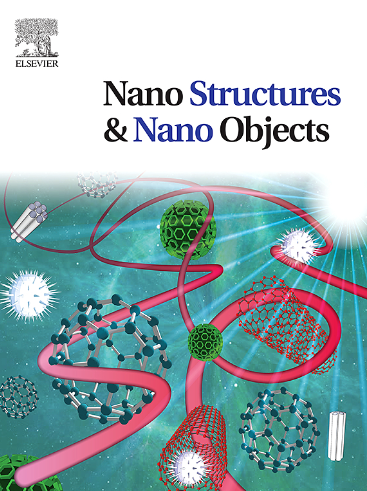Hydromagnetic micropolar nanofluid heat and mass transfer in a porous channel with thermophoresis, brownian motion and non-uniform heat source
IF 5.45
Q1 Physics and Astronomy
引用次数: 0
Abstract
Understanding heat and mass transfer in the flow dynamics of nanofluids within a porous channel has significant applications in various engineering fields, such as groundwater remediation in environmental engineering, enhanced oil recovery in petroleum engineering, and heat exchanger design in system cooling engineering, among others. In light of these applications, the current research focuses on the hydromagnetic flow and heat transfer mechanisms of a non-Newtonian micropolar nanofluid through a porous channel. A mathematical model incorporating the influence of a magnetic field, thermal radiative flux, temperature-dependent thermal conductivity, and a non-uniform heat source is developed with engineered colloidal nanoparticles using the Buongiorno model. The model is transformed into an ordinary differential equation from the initial partial differential equations using appropriate transformations. The resulting model is solved numerically to obtain the solution for the transport phenomena. Several tables are compiled, and graphs are plotted to illustrate the influence of key parameters with real engineering relevance. The investigation revealed that the skin friction coefficient significantly decreased due to the micropolar fluid parameter, while the vortex viscosity term amplified the couple stress profile. Furthermore, the systems thermal energy increased with higher thermophoresis, Brownian motion, and Peclet numbers for heat and mass diffusion. In contrast, the hydrodynamic boundary layer thickness decreased as the strength of the porosity and magnetic field terms increased.
求助全文
约1分钟内获得全文
求助全文
来源期刊

Nano-Structures & Nano-Objects
Physics and Astronomy-Condensed Matter Physics
CiteScore
9.20
自引率
0.00%
发文量
60
审稿时长
22 days
期刊介绍:
Nano-Structures & Nano-Objects is a new journal devoted to all aspects of the synthesis and the properties of this new flourishing domain. The journal is devoted to novel architectures at the nano-level with an emphasis on new synthesis and characterization methods. The journal is focused on the objects rather than on their applications. However, the research for new applications of original nano-structures & nano-objects in various fields such as nano-electronics, energy conversion, catalysis, drug delivery and nano-medicine is also welcome. The scope of Nano-Structures & Nano-Objects involves: -Metal and alloy nanoparticles with complex nanostructures such as shape control, core-shell and dumbells -Oxide nanoparticles and nanostructures, with complex oxide/metal, oxide/surface and oxide /organic interfaces -Inorganic semi-conducting nanoparticles (quantum dots) with an emphasis on new phases, structures, shapes and complexity -Nanostructures involving molecular inorganic species such as nanoparticles of coordination compounds, molecular magnets, spin transition nanoparticles etc. or organic nano-objects, in particular for molecular electronics -Nanostructured materials such as nano-MOFs and nano-zeolites -Hetero-junctions between molecules and nano-objects, between different nano-objects & nanostructures or between nano-objects & nanostructures and surfaces -Methods of characterization specific of the nano size or adapted for the nano size such as X-ray and neutron scattering, light scattering, NMR, Raman, Plasmonics, near field microscopies, various TEM and SEM techniques, magnetic studies, etc .
 求助内容:
求助内容: 应助结果提醒方式:
应助结果提醒方式:


